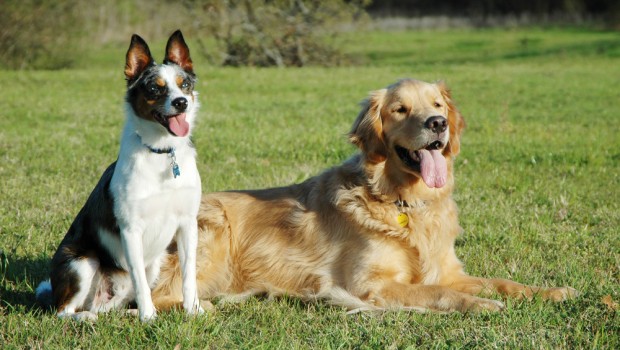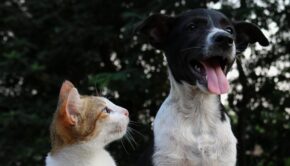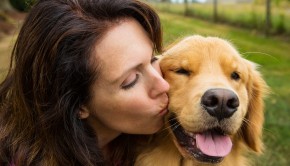Showing Your Dog: Training Tips
Showing your own dog offers many rewards. There’s a sense of achievement and pride when you successfully handle your dog to the winner’s circle, and a deeper bond of respect and affection is shared between you and your pet.
The grooming and other preparation necessary before a show is felt to be a very relaxing hobby for many competitors, giving them a chance to enjoy their dogs more. Besides personal satisfaction, there also exists the opportunity to meet others interested in your breed of dog with whom you can share interests and helpful hints, as well as the joys and disappointments of showing.
To start, let us assume you already own a dog of show quality, since the discussion of obtaining one is another subject in itself. A dog of show quality can be defined as one that meets, or comes very close to, breed standards, according to conformation, size, type, disposition and color. If you have reservations as to whether your pet dog is of show quality or not, you should ask breed authorities and evaluate your pet as best you can by reading a copy of your breed standard and closely scrutinizing photos of top winning dogs.
I would also recommend obtaining a copy of the American Kennel Club (AKC) rules and regulations pamphlet governing dog shows; this can be done by writing to the AKC. If at this point you and other more experienced dog show goers feel your dog has winning potential, you are ready to begin the training process.
Showing your dog is more involved than any spectator realizes. A great deal of preparation is needed for both you and your dog. The dog must be trained to stand in a show pose so that the judge can look at him and examine his conformation by feeling the dog structure and muscling first hand. The dog must stand perfectly still and submit to the handling without growling, flinching, fidgeting, or being playful or affectionate.
Start teaching your dog to stand in a show pose by standing on his right side and placing the lead high up on his neck right behind the ears. Then clasp the lead in your left hand, place the dog’s head at a high, but comfortable height, and keep light tension on the lead so it remains there. Now reach down with your right hand and adjust the front, beginning with the left foreleg, then the right so that the legs are parallel from all sides and perpendicular to the ground. The toes should be pointed straight ahead, neither inward or outward like a duck.
The width between the front legs varies according to breeds and individual dogs, but the best adjustment is the one that provides the most solid base for your dog. On smaller breeds, it is often permissible to set up the front by placing a hand under the dog’s chest, lifting him slightly, and letting the front drop naturally into position. If your dog drops into a good solid stance consistently, it is to your advantage to set up the front in this same manner.
Change the lead from the left to the right hand (while maintaining the tension) and begin to adjust the rear legs. Do not let go of the lead or let the head drop out of position or you will most probably find the front will need readjusting again.
In some dogs with very good rears, little or no adjustment will be necessary and if that is the case, great; however, if your dog’s rear is out of line, begin by adjusting the left leg and then the right, as with the front.
There’s a greater variation of stances in the hindquarters between breeds. For example, German Shepherds are shown with one rear leg forward and the other back so check your breed photos to see which is correct for your type of breed. However, most are shown with the hind legs parallel and slightly wider spread than the front. The line of the pastern from the hock down should be perpendicular to the ground with toe straight forward.
At this point, your dog should be fairly well ‘stacked’ in his show pose. Make sure none of the legs have shifted, and then check your dog’s topline. In most breeds, the topline should be level or sloping downward towards the tail. Again, check your breed’s standard, as some breeds, like the Whippet and Borzoi, require a ‘roach’ back. If the topline is correct, make sure the tail is in the proper position and that your dog’s head is up with an alert and intelligent expression.
As you become more proficient, you will see where you can make further small adjustments to improve the appearance of your dog and minimize his faults while maximizing his strong points. However, that comes much later, after you gain more experience. Make your dog hold this pose for only a few seconds at first while giving the command ‘Stay’ then offer him lavish praise and reward him.
Practice this several times a day, until after one month or so of practice he will stand for up to five minutes or more without you having to readjust him. Always try to keep these sessions pleasant for both you and your dog and do not be overly critical until he understands what is expected of him.
If you have a puppy, you will have to be especially patient and expect his ability to hold the pose to be much shorter in duration. Your dog must enjoy showing or he will not perform well in the ring. Therefore, try to make it fun and don’t forget to reward him with praise and his favorite treats.
The next step is to teach your dog to submit to being checked by a complete stranger. Start with a friend who knows the dog; while you hold him in his show pose have your friend touch the dog all over beginning with his head, just as the judge would. This includes parting the dog’s lips so the bite can be seen, and picking up the feet one at a time and dropping them back into position. Ask your friend to go slowly and thoroughly and to speak softly to your dog so as not to scare him.
Practice this more often with people your dog knows and trusts, and reward him after each examination. When he calmly accepts the examination, ask someone who is a total stranger to your dog and do the same.
Attending a handling class for dogs is particularly helpful in this situation. However, if you don’t have access to one, people admiring your dog in a public place like a park will often go over him if you ask them. The idea is to get the dog used to remaining still while he’s in his show pose and strangers are examining him.
Another most important part of showing your dog is the gaiting in the ring. You will be asked to gait your dog around the ring with the rest of the class. You will also be required to engage in individual gaiting in specified patterns. There are six main gaiting patterns. You need to learn and practice them with your dog. You must spend as much time practicing gaiting as you do stacking in the show pose.
It is also important to find the gaiting speed that makes your dog look best. Some dogs extend more and look better at a fast speed, while others lose all grace and symmetry at a fast pace and should be gaited slowly. Ask other dog show competitors or breed experts how they think your dog moves best, and then have someone else move your dog for you at various speeds and evaluate the gaiting speed yourself. Movement is very important in the show ring. A properly constructed dog should move well while a poorly constructed dog cannot.
If your dog is gaiting too slowly in the ring, short tugs on the lead will usually speed him up. Never drag your dog along with a constant pull because he will only fight you. The same is true if your dog wants to move too fast. Generally, you should move your dog on a loose lead in order to show natural, fluid movement.
While gaiting in the show ring, do not crowd the exhibitor in front of you, and do not pass unless it is necessary or unless the judge signals you to do so. If the dog before you is much slower, hold back on your dog when out of the judge’s eye, creating a gap between you and the preceding exhibitor; then move out at your dog’s best pace when in the judge’s view so he can see your dog at his best.
While gaiting in the ring, try to keep one eye on your dog and the other on the judge so you can see when he is observing your dog and so you are aware if he motions to you.
Do not speak to anyone while in the ring, including the judge, unless he asks you a question. Keep your dog quiet and on his best behavior and don’t let him sniff or come in contact with the other show dogs as it may frighten them. Also, never reprimand your dog in the ring. If he misbehaves, take care of it later, but do not cause a scene in the ring, especially in front of the judges.
It is also a good idea to watch the professional dog handlers in action when you can and learn more about different techniques in showing. You can also gain advantage by watching their style and methods.






